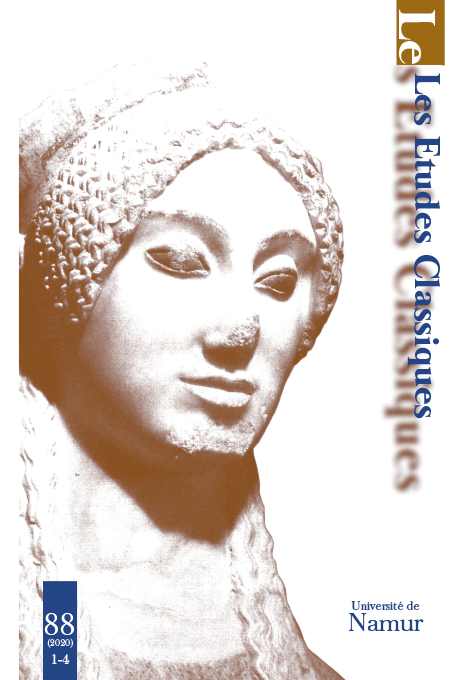 previous article in this issue previous article in this issue | next article in this issue  |

|
Document Details : Title: Amphitrite in and out of the Olympian Pantheon Author(s): LARSON, Jennifer Journal: Les Études Classiques Volume: 87 Issue: 1-4 Date: 2019 Pages: 29-40 DOI: 10.2143/LEC.87.1.3290461 Abstract : Epic offers three distinct traditions of Amphitrite. In the Odyssey the name is used as a metonym for the sea; 'loud-moaning Amphitrite' is a breeder of monsters. Hesiod anthropomorphizes Amphitrite, making her the spouse of Poseidon, while the Homeric Hymn to Apollo identifies her as a Titan-like elder goddess. I examine the mythic context in which Hesiod’s domestication of Amphitrite took place, arguing that his innovation influenced the development of the Poseidon and Amphitrite cult at Penteskouphia, as well as the goddess’ ultimate representation as an Olympian deity. L’épopée propose trois traditions distinctes d’Amphitrite. Dans l’Odyssée, son nom désigne la mer par métonymie, et «Amphitrite gémissante» est la mère de monstres. Hésiode anthropomorphise Amphitrite, faisant d’elle l’épouse de Poséidon, tandis que l’Hymne homérique à Apollon l’identifie à la sœur aînée des Titans. Nous examinerons le contexte mythique dans lequel a eu lieu la domestication d’Amphitrite par Hésiode, arguant que cette innovation a influencé le développement du culte de Poséidon et d’Amphitrite à Penteskouphia, ainsi que la représentation finale de la déesse en tant que divinité olympienne. |
 |
